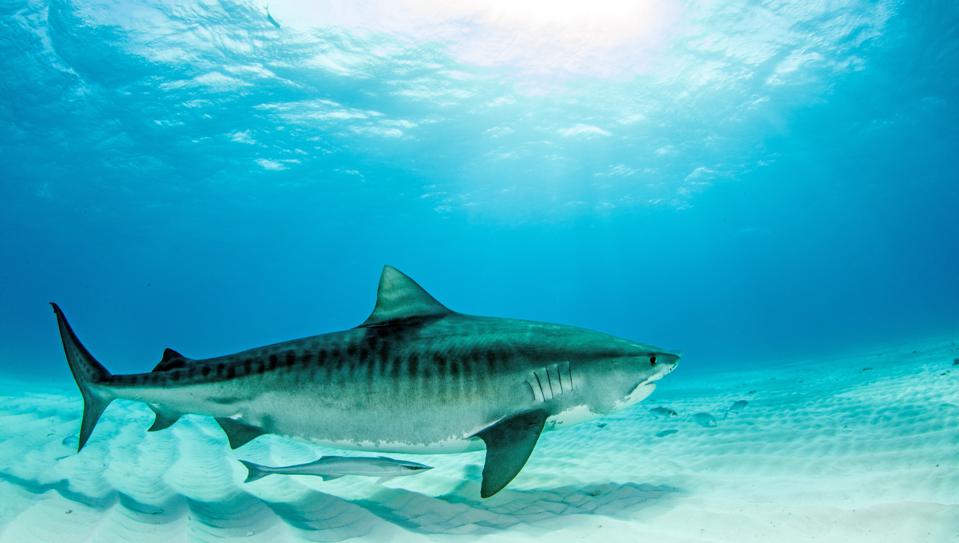The successful management of animals requires determining when and where animals give birth to protect their vulnerable life-stages (such as the newborn stage or throughout pregnancy) and specific places (like an estuary that acts like a nursery). Until now, highly migratory sharks in the wild have remained elusive in terms of this information.
After all, no matter how big these sharks are, the ocean is much, much bigger.
The answer to this age-old question is that of emerging technology. While many traditional shark tags are affixed on their first dorsal fin, some tags have started to be inserted into the animal’s body. One of those types are intrauterine tags, or vaginal implant transmitters (VITs), which are radio transmitters inserted into the vaginal canal of a female that is expelled when she gives birth. Since the 1980s, VITs have been used to identify the timing and location of where animals give birth in terrestrial settings. However, the tag hasn’t been used in marine habitats due to the challenges that come with using technology in water.
But what if it could be?
Dr. Neil Hammerschlag, formerly of the Rosenstiel School of Marine and Atmospheric Science in University of Miami, and Dr. James A. Sulikowski of Arizona State University were convinced that such a device could be made for underwater studies. “Beginning in spring of 2017, we worked with Lotek Inc to develop a waterproof satellite-linked VIT, [calling it the] Birth-Alert-Tag (BAT). The BATs were designed to be egg shaped [so they could easily be inserted into the uterus and] to remain inconspicuous among the developing embryos,” the authors explain in their new paper. “The electronics were encased in an egg-shape buoyant synthetic foam covered with a biologically inert sealant that upon expulsion at birth, would float to the surface.”
“We chose tiger (Galeocerdo cuvier) and scalloped hammerhead sharks (Sphyrna lewini) to test these tags because we had some knowledge about their reproductive biology in the region that we could use to help corroborate the results from the Birth Alert Tags,” said Hammerschlag. “The BATs indirectly also can help inform us on how long gestation is as well as where gestation and nursery grounds may be.”
In December 2019, a female tiger shark was captured on the little Bahama Bank, Bahamas. A putative gestation ground in the western Atlantic for this species, this individual was secured alongside the boat, rolled on her back to induce tonic immobility, and was scanned using a Ibex EVO II portable ultrasound machine to identify if the shark was pregnant. She was. “The ultrasounds allowed us to identify pregnant females for BAT tagging. We were also able to measure the size of the pups from the ultrasound, which allowed us to estimate when birthing would likely occur,” explained Hammerschlag. The team then carefully inserted the BAT into the cloacal opening using a specialized applicator to guide it into the left uterus of the shark. (Yup, sharks can have more than one uterus) A fin-mounted satellite tag was then affixed to her dorsal fin, providing satellite-linked positions whenever her fin surfaced. Almost three years later in March 2022, a female scalloped hammerhead shark was captured off the coast Cape Hatteras, North Carolina and a similar process was carried out.
And then they waited.
Eventually the tags started pinging data back to the scientists… and they were stunned. This tag remotely documented, for the first time, the location and timing of birth by these highly migratory oceanic animals. “James and I were ecstatic – seriously ecstatic! It’s one thing to have a crazy idea, it’s another to see it work in a way that can transform shark conservation science,” says Hammerschlag. “It was a total surprise,” Sulikowski agrees. “For most shark species we have no idea where they give birth or how far they must travel to habitats that are essential to their survival.”
While the team understands that they cannot fully rule out the possibility that the BAT was prematurely expelled prior to birth, they have high confidence that the BAT was successfully released when they gave birth due to a slew of complementary evidence. “Our study benefited from several lines of complementary evidence to corroborate the results from the BAT tags, including the lengthy duration (up to 157 days) that the BATs remained in utero as premature evacuation would have occured within hours or days of implantation, the timing of BAT transmission which was consistent with the the known timing of neonate sharks of these species in the region, the time it took until the BATs transmitted was consistent with the time it would take the pups as measured in utero to reach their known range in size at birth, and the tracked movements of the sharks were consistent with moving to inshore areas to give birth.”
The novel technology, the scientists say, will be particularly useful in discovering and protecting the pupping and nursery grounds of threatened and endangered shark species. Concludes Hammersclag: “In the case of sharks and fishes, where birth or spanning cannot be observed, scientists have either lacked accurate data on the location and timing of birth or have had to rely on sacrificing individuals or receiving dead specimens from fishing operations. Given that sharks are among the most threatened vertebrates on the planet, it is critical to pursue non-lethal methods. So, this technology opens up a whole new opportunity to document shark birthing directly without having to kill them. In addition to helping to document the timing and location of birth in threatened shark species, we are hopeful this technology catalyzes new ideas and research to apply non-lethal methods to study marine animal reproduction more broadly.”

